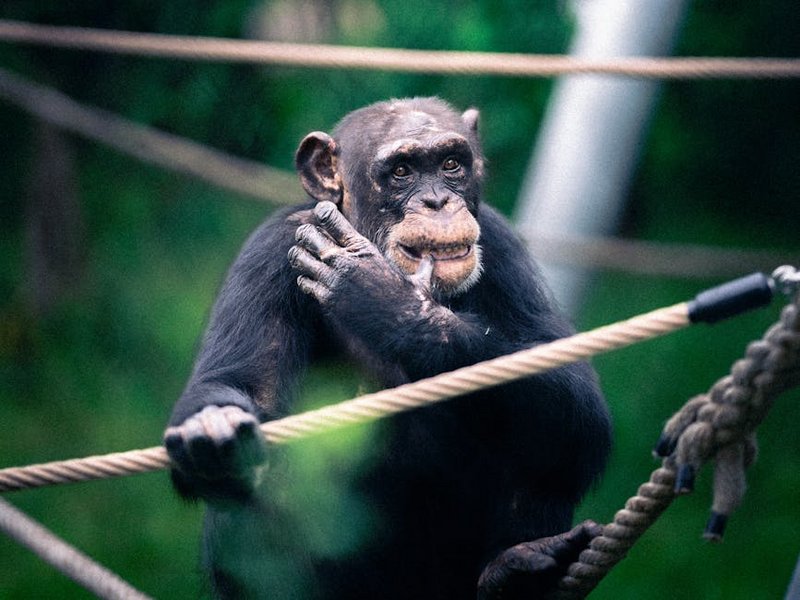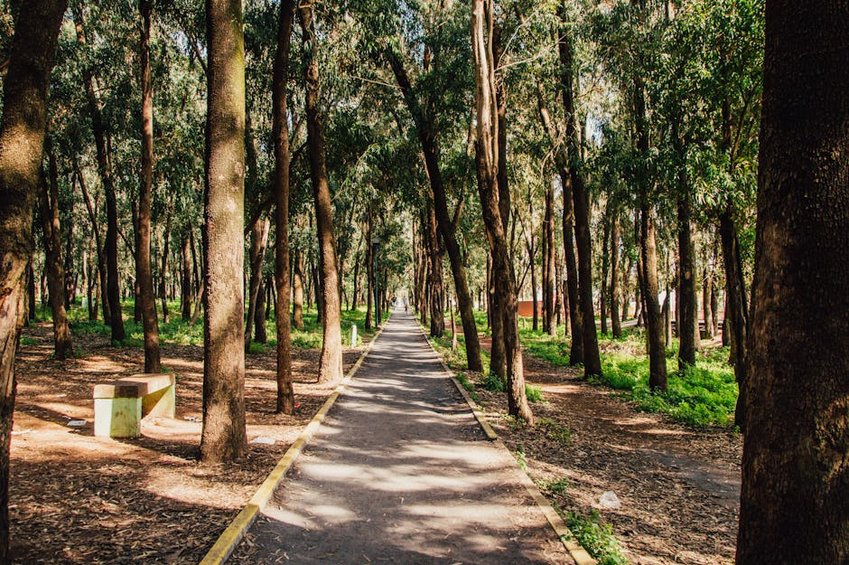Exploring the Central African Republic Dzanga Sangha Forest: A Wildlife Adventure
Imagine stepping into a pristine rainforest where the air hums with the calls of exotic birds and the rustle of leaves signals the presence of forest elephants and lowland gorillas. The Central African Republic Dzanga Sangha Forest is one of Africa’s last great wilderness areas, a UNESCO World Heritage site that offers an unparalleled wildlife experience for adventurous travelers. Nestled in the southwestern corner of the Central African Republic, this protected reserve spans over 4,000 square kilometers and forms part of the larger Sangha Trinational landscape shared with Cameroon and the Republic of Congo. Your journey here will immerse you in dense tropical forests, crystal-clear rivers, and the incredible biodiversity that makes this region a bucket-list destination for nature enthusiasts. From tracking habituated gorillas to witnessing elephants at the legendary Dzanga Bai clearing, every moment in the Central African Republic Dzanga Sangha Forest promises unforgettable encounters with nature’s wonders. This guide will walk you through everything you need to know to plan your adventure, including practical tips on visas, safety, and making the most of your visit to this remote but rewarding destination.
Central African Republic Dzanga Sangha Forest – Essential Information
Before embarking on your journey to the Central African Republic Dzanga Sangha Forest, it’s crucial to understand the foundational aspects of this unique ecosystem. The forest is part of the Congo Basin, the world’s second-largest rainforest, and is renowned for its high density of megafauna, including forest elephants, western lowland gorillas, and bongo antelopes. Established as a special reserve in 1990, it operates under the management of the Central African government in partnership with organizations like WWF, focusing on conservation and community-based tourism. You’ll find that the area is divided into several zones, with the Dzanga-Ndoki National Park at its core, offering protected habitats for wildlife. The climate is typically equatorial, with high humidity and temperatures ranging from 70°F to 90°F (21°C to 32°C) year-round, though seasonal variations affect accessibility and animal sightings. For Western travelers, especially from the US or EU, visiting requires careful planning due to the remote location and specific entry requirements, but the rewards of experiencing this biodiverse hotspot are immense.
What is Dzanga Sangha Forest? – A Biodiversity Hotspot
- The Central African Republic Dzanga Sangha Forest is a protected area known for its rich biodiversity, including over 400 bird species, 100 mammal species, and countless plants, making it a prime destination for ecotourism and wildlife research.
- It features the famous Dzanga Bai, a natural clearing where up to 100 forest elephants gather daily to drink mineral-rich water, offering one of Africa’s most spectacular wildlife viewing opportunities without the crowds of more popular parks.
- Conservation efforts here are community-focused, involving local Ba’Aka pygmy communities in guiding and anti-poaching patrols, which not only protects wildlife but also provides sustainable livelihoods and cultural exchanges for visitors.
- Budget travelers can expect to spend around $2,000-$3,000 for a 5-7 day trip, covering basic accommodations in community lodges, group tours, and minimal extras, with park entry fees starting at $50 per day.
- Mid-range options typically cost $3,500-$4,500, including comfortable lodges like Sangha Lodge, guided activities such as gorilla tracking ($100-$200 per permit), and domestic flights from Bangui, offering a balance of comfort and adventure.
- Luxury experiences range from $5,000 upwards, featuring exclusive safari camps, private guides, and customized itineraries with added cultural interactions, ensuring a premium wildlife immersion without compromising on safety or convenience.
- UNESCO World Heritage Centre – Sangha Trinational
- World Wildlife Fund – Congo Basin Conservation
Key Historical and Conservation Context
Understanding the history of the Central African Republic Dzanga Sangha Forest adds depth to your visit. The area gained international recognition in the 1990s as part of conservation initiatives to protect it from logging and poaching pressures. In 2012, it was inscribed as a UNESCO World Heritage site due to its outstanding universal value, highlighting its role in preserving critical habitats for endangered species. Over the years, partnerships with global organizations have helped stabilize wildlife populations, though challenges like political instability in the region require ongoing vigilance. For you as a traveler, this means that visits contribute directly to conservation through park fees and community projects, ensuring that your adventure supports long-term protection efforts. The forest’s management also includes research stations where scientists study primate behavior, offering you chances to learn about ongoing conservation work during guided tours.
Central African Republic Dzanga Sangha Forest – Planning Your Trip
Planning a trip to the Central African Republic Dzanga Sangha Forest involves several key steps to ensure a smooth and enriching experience. First, you’ll need to secure a visa for the Central African Republic, which requires applying in advance at an embassy, as visas on arrival are not typically available for tourists. For US and EU passport holders, this process can take several weeks, so start early and check for any travel advisories from your government. Next, consider your budget: a week-long trip can range from $2,000 to $5,000 per person, depending on accommodations and activities, with costs covering flights, park fees, guides, and meals. Health preparations are vital; you must have a yellow fever vaccination certificate, and malaria prophylaxis is highly recommended due to the forest environment. Booking through reputable tour operators is essential, as they handle logistics like internal flights from Bangui to Bayanga and arrange permits for gorilla tracking, which are limited to small groups to minimize impact on wildlife.
Best Time to Visit Dzanga Sangha Forest
The ideal time to visit the Central African Republic Dzanga Sangha Forest is during the dry seasons, from December to February and June to August, when trails are more accessible and wildlife viewing is at its peak. During these months, rainfall is minimal, with averages of 2-4 inches per month, making it easier to navigate the forest and spot animals congregating around water sources. However, the wet season from March to May and September to November offers lush greenery and fewer tourists, though muddy paths and higher humidity can challenge hiking. Temperatures remain relatively constant, but the dry periods provide more comfortable conditions for extended explorations. If you’re targeting specific experiences like gorilla habituation or elephant observations, consult with local guides for seasonal variations, as animal movements can shift with food availability.
Budget Planning and Costs
Essential Preparation Checklist
To make the most of your Central African Republic Dzanga Sangha Forest adventure, follow this practical preparation list. Start by ensuring your passport is valid for at least six months beyond your travel dates and obtain a tourist visa from the nearest Central African Republic embassy, which may require proof of accommodation and return tickets. Pack lightweight, breathable clothing in neutral colors for blending into the forest environment, along with sturdy hiking boots, rain gear, and insect repellent to protect against mosquitoes. Health-wise, schedule a visit to a travel clinic for vaccinations like yellow fever, typhoid, and hepatitis A, and bring a basic first-aid kit including anti-malaria medication. Finally, book your tours and permits well in advance, as gorilla tracking slots are limited, and consider travel insurance that covers emergency evacuation, given the remote location of the forest.

Central African Republic Dzanga Sangha Forest – Top Attractions and Activities
Once you arrive in the Central African Republic Dzanga Sangha Forest, a world of incredible activities awaits, each designed to connect you with the region’s stunning wildlife and landscapes. The highlight for many visitors is gorilla tracking, where you’ll hike through dense forest with experienced guides to observe habituated western lowland gorillas in their natural habitat—an emotional and awe-inspiring experience that requires patience and respect for these gentle giants. Another must-do is visiting Dzanga Bai, a large clearing where you can watch forest elephants, bongo antelopes, and other animals from elevated platforms, often with fewer than a dozen other tourists, creating an intimate safari atmosphere. For adventure seekers, guided walks with Ba’Aka pygmy guides offer insights into traditional hunting techniques and medicinal plants, while boat trips on the Sangha River reveal hippos, crocodiles, and vibrant birdlife. Whether you’re a photographer, nature lover, or cultural enthusiast, the diversity of experiences ensures that every day brings new discoveries in this untouched wilderness.
Must-See Highlights – Wildlife Encounters
Your visit to the Central African Republic Dzanga Sangha Forest wouldn’t be complete without experiencing its iconic wildlife highlights. The gorilla habituation program allows you to spend up to four hours with a gorilla family, observing their social behaviors up close, which is a rare privilege compared to more crowded destinations like Rwanda or Uganda. At Dzanga Bai, the elephant gatherings are spectacular, especially in the early morning or late afternoon when herds descend to drink, providing unparalleled photo opportunities. Additionally, guided night drives reveal nocturnal species like pangolins, genets, and owls, adding an extra layer of excitement to your safari. These activities are carefully managed to minimize human impact, so you can enjoy ethical wildlife viewing that supports conservation efforts and local communities.
Hidden Gems and Local Favorites
Beyond the well-known attractions, the Central African Republic Dzanga Sangha Forest holds hidden gems that offer a more secluded experience. One such spot is the Bai Hokou clearing, where you might see rare sitatunga antelopes and forest buffalos in a quieter setting, away from the main tourist paths. Another local favorite is participating in net hunting with Ba’Aka communities, a traditional practice that provides a cultural immersion and teaches you about sustainable forest use. For a relaxing break, take a canoe trip on the nearby streams, where you can spot kingfishers and monkeys while enjoying the serene sounds of the rainforest. These lesser-known activities not only enrich your journey but also distribute tourism benefits more broadly, helping to preserve the forest’s unique heritage for future generations.
Central African Republic Dzanga Sangha Forest – Practical Travel Information
Navigating the practical aspects of traveling to the Central African Republic Dzanga Sangha Forest is key to a successful trip, especially given its remote location. Most international travelers fly into Bangui, the capital, via connections from cities like Paris or Nairobi, and then take a domestic flight to Bayanga, the gateway town near the forest. Once there, transportation within the reserve is primarily by 4×4 vehicles or boats, arranged through your tour operator, as public transport is limited. Accommodations range from basic campsites to eco-lodges, with options like Dzanga Sangha Lodge offering comfortable rooms and meals prepared with local ingredients. It’s important to note that infrastructure is basic, with limited electricity and internet, so pack power banks and embrace the opportunity to disconnect. Safety-wise, while the forest itself is secure with guides, always follow travel advisories and hire reputable operators to ensure a smooth experience in this off-the-beaten-path destination.
| Category | Options/Features | Price Range (USD) |
|---|---|---|
| Accommodation | Basic campsites, eco-lodges with shared facilities, mid-range lodges with private baths | $50-$150 per night |
| Activities | Gorilla tracking, elephant viewing, cultural tours, river cruises | $100-$300 per activity |
| Transportation | Domestic flights from Bangui, 4×4 transfers, boat hires | $200-$500 for round-trip internal travel |


